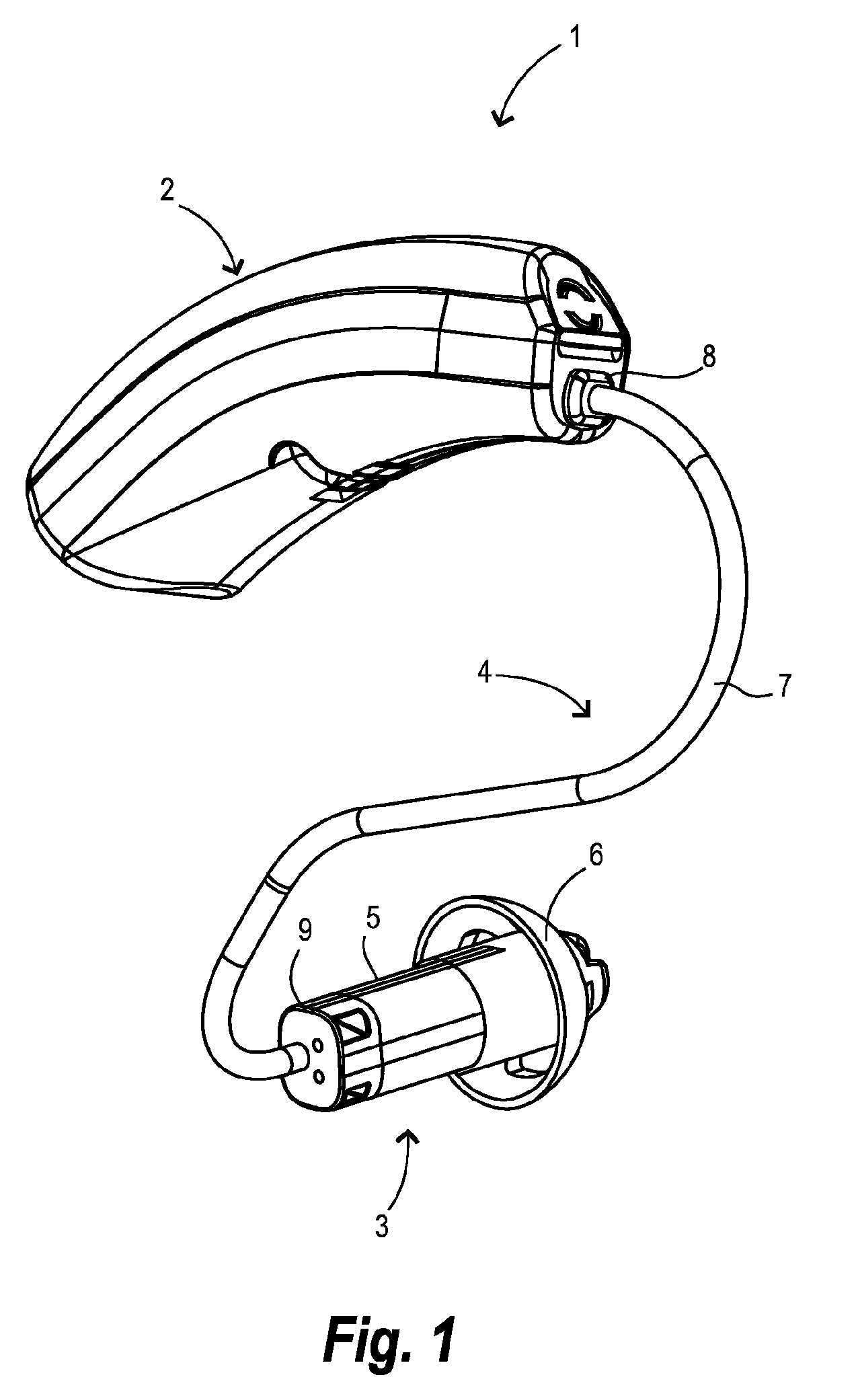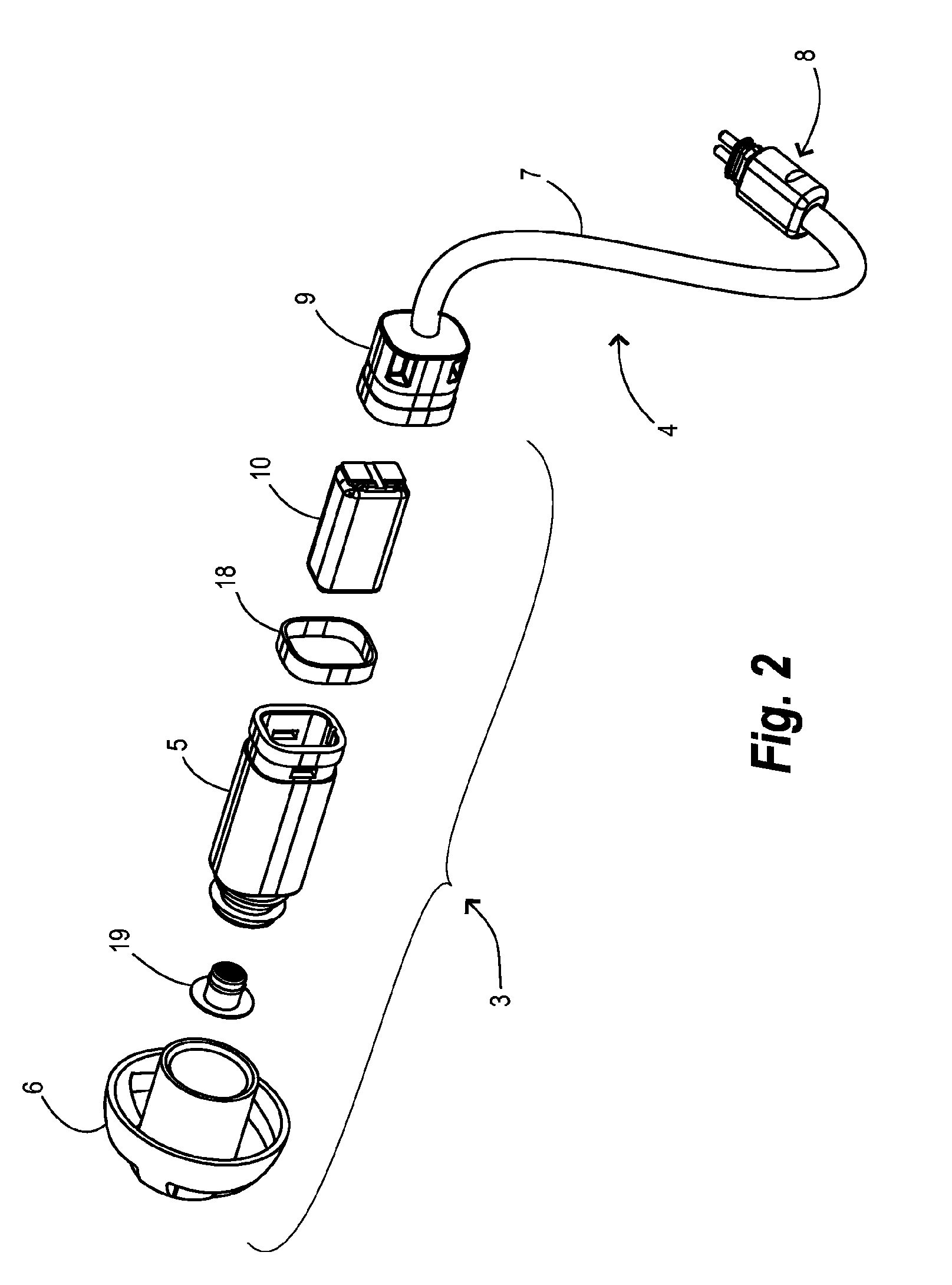Method for identifying a receiver in a hearing aid
a receiver and hearing aid technology, applied in the field of hearing aids, can solve problems such as significant hearing aid adjustment, and achieve the effect of straightforward and time-efficien
- Summary
- Abstract
- Description
- Claims
- Application Information
AI Technical Summary
Benefits of technology
Problems solved by technology
Method used
Image
Examples
Embodiment Construction
[0026]FIG. 1 shows a RITE-type hearing aid 1 as initially described. The hearing aid comprises a Behind-The-Ear (BTE) housing component 2, and a Receiver-In-The-Ear (RITE) component 3. The RITE component comprises a connector 4, a receiver housing 5 and an earplug 6. The connector 4 serves to electrically connect the sound producing parts of the RITE-component 3 with the BTE housing component 2. To enable this the connector 4 comprises an electrically conductive means 7, a coupling means 8 for coupling the RITE component 3 to the BTE housing component 2 and a fixture 9.
[0027]As can be seen from FIG. 2 showing an exploded view of a RITE component 3, the RITE component 3 further comprises an earwax guard 19, a receiver housing 5, a receiver sealing 18 and a receiver 10. The fixture 9 is provided to connect the receiver 10 in the receiver housing 5 with the connector 4.
[0028]The above mentioned coupling means 8 provides for an easy exchange of the whole RITE component 3 and thereby the...
PUM
 Login to View More
Login to View More Abstract
Description
Claims
Application Information
 Login to View More
Login to View More - R&D
- Intellectual Property
- Life Sciences
- Materials
- Tech Scout
- Unparalleled Data Quality
- Higher Quality Content
- 60% Fewer Hallucinations
Browse by: Latest US Patents, China's latest patents, Technical Efficacy Thesaurus, Application Domain, Technology Topic, Popular Technical Reports.
© 2025 PatSnap. All rights reserved.Legal|Privacy policy|Modern Slavery Act Transparency Statement|Sitemap|About US| Contact US: help@patsnap.com



